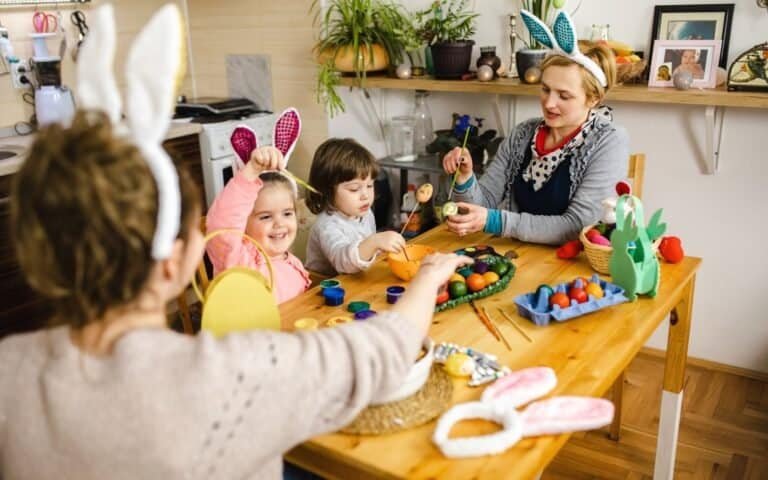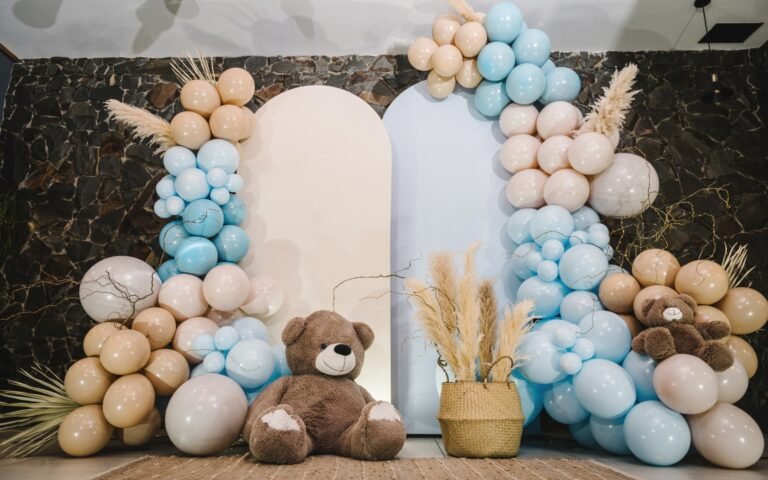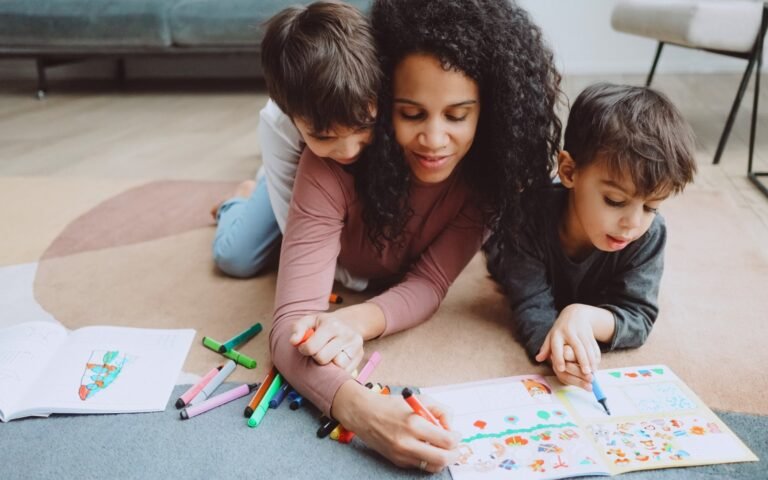Sensory Play Activities for Babies and Toddlers 2025: Fun Ways to Explore and Learn

Sensory play is a fantastic way to help babies and toddlers discover the world around them while building essential skills. By engaging in sensory play activities, your little one can explore new textures, sounds, and sights. From using everyday items like ice cubes and spaghetti to creating DIY sensory bottles, you’ll find simple and safe ways to encourage growth and learning right at home.
Key Highlights – Sensory Play Activities for Babies
- Sensory play is important for the development of fine and gross motor skills in babies and toddlers.
- Safe, simple sensory activities can help kids learn through various textures, sounds, and sights.
- Everyday items like water, edible finger paint, and ice cubes are excellent for sensory experiences.
- These activities help develop cognitive, language, and social-emotional skills through play.
Why Sensory Play Is Important for Babies and Toddlers
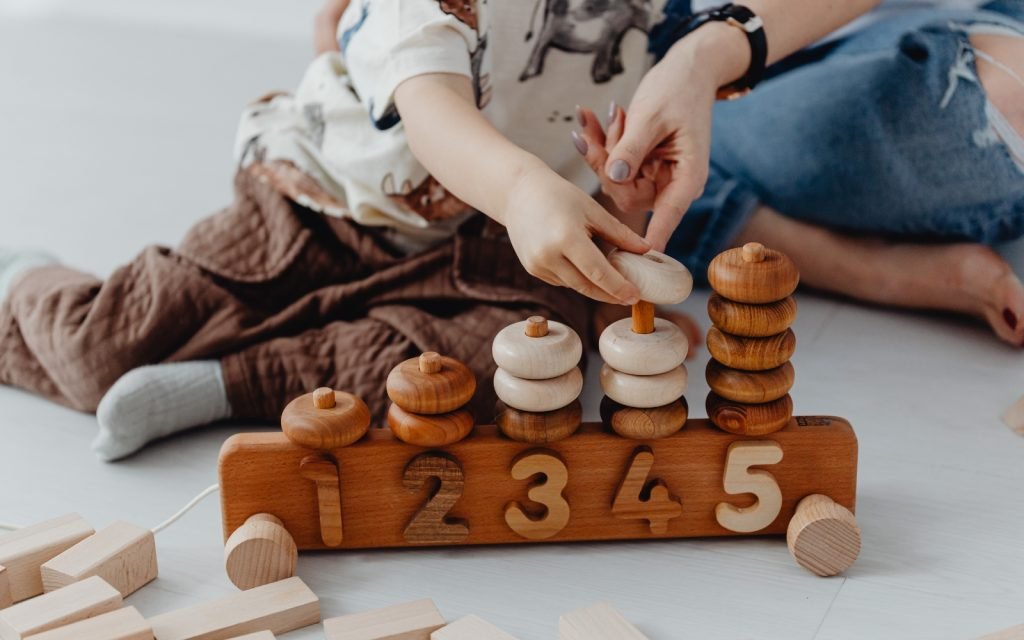
For young children, sensory play offers a unique way to process their surroundings. Babies and toddlers are naturally curious and learn best when they engage with different textures, temperatures, and colors. Sensory play not only entertains but also provides essential developmental benefits, encouraging motor skills, concentration, and body awareness.
Encouraging Independent Play is another critical aspect of helping your toddler grow and learn. Activities like sensory play provide opportunities for children to explore on their own while developing problem-solving skills and self-confidence.
How Sensory Play Helps Your Little One’s Development
- Motor Skills: Sensory play activities encourage fine and gross motor skill development by letting your toddler grasp, scoop, and pour different objects.
- Cognitive Development: Kids learn problem-solving, concentration, and cause-and-effect thinking.
- Language Skills: Playing with new textures and sounds expands vocabulary by introducing sensory-related words.
- Emotional Growth: Sensory activities can have a calming effect, which helps toddlers learn self-regulation.
Sensory Play Activities for Babies and Toddlers
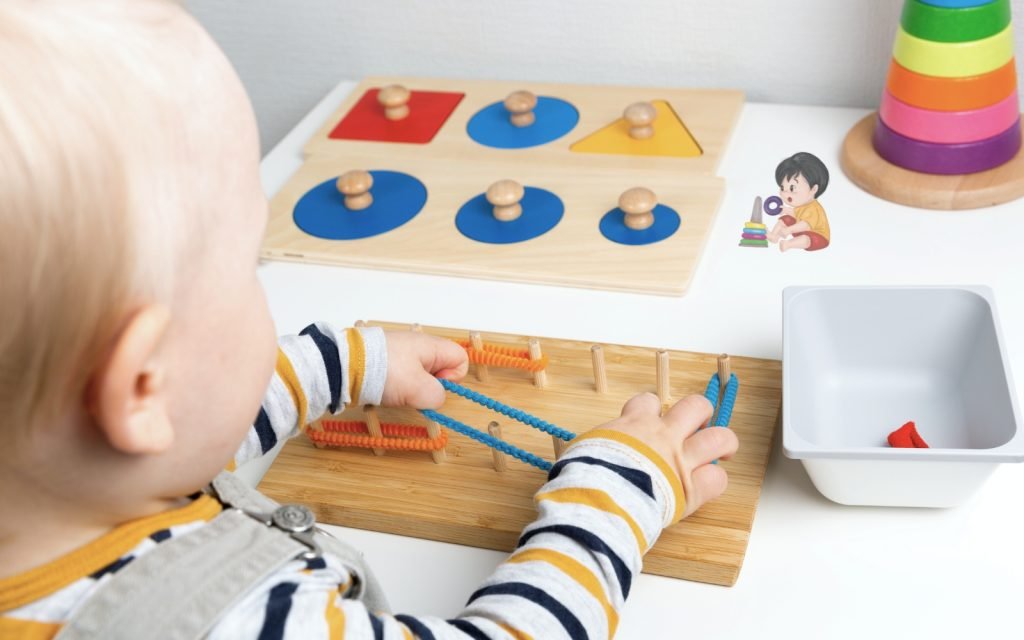
1. Water Play with Splash and Scoop
Water play is a versatile sensory activity that babies and toddlers adore. Using a shallow water basin or splash mat, your little one can scoop, pour, and splash to their heart’s content. This activity is simple but filled with sensory learning opportunities.
- How to Set It Up: Fill a shallow container with water and place small, colorful toys or items they can easily scoop, such as plastic cups or large spoons.
- Skills Developed: Fine and gross motor skills are honed as toddlers splash, scoop, and grasp different objects.
- Sensory Benefits: Engages touch and sight as they feel the water, watch it move, and observe floating objects.
- Safety Tip: Supervise closely, using only a shallow amount of water and baby-safe items.
Outdoor spaces are perfect for water play, and you can explore Safe Outdoor Play Ideas for Toddlers to ensure a secure and enjoyable environment.
2. DIY Sensory Bottles
Sensory bottles are easy to make and offer a visually stimulating experience for toddlers. These DIY bottles can be filled with glitter, rice, or beads, creating a fascinating sensory experience as they shake and watch the contents settle.
- How to Set It Up: Fill a bottle with glitter, dyed water, or colorful beads, and secure the lid tightly to avoid spills.
- Skills Developed: Fine motor skills as they shake, turn, and observe how the contents move.
- Sensory Benefits: Provides a sensory experience focused on sight and sound, with bright colors and rattling sounds.
- Safety Tip: Use baby-safe, non-toxic materials and ensure the lid is secure to prevent any choking hazards.
3. Edible Finger Painting
Edible finger painting is an excellent way to introduce creative play in a safe, baby-friendly way. Using yogurt or pureed fruits as “paint,” this activity lets your toddler get messy while exploring colors and textures in a sensory-safe environment.
- How to Set It Up: Mix food coloring or natural fruit purees into plain yogurt. Give them a large piece of paper to “paint” on.
- Skills Developed: Fine motor skills and creative thinking as they dip, spread, and explore different movements.
- Sensory Benefits: Touch, sight, and even taste, as they feel the cool paint, watch colors mix, and taste safe ingredients.
- Safety Tip: Use edible, non-toxic materials to ensure safety if they decide to taste their “paint.”
Engaging in activities like edible painting also supports Early Language Development Tips, as you can describe the colors, textures, and actions during the play session.
4. Spaghetti Sensory Bin
Cooked spaghetti provides a fun and squishy sensory play activity for your little one to explore different textures. You can even dye the spaghetti for a colorful, extra-entertaining experience.
- How to Set It Up: Boil spaghetti, let it cool, and add food coloring to create a rainbow of noodles. Place it in a shallow tray or bin for easy access.
- Skills Developed: Fine motor skills as they grab, squish, and manipulate the noodles.
- Sensory Benefits: Engages touch and sight as they explore the soft, slippery texture and vibrant colors.
- Safety Tip: Ensure pieces are large enough to avoid choking hazards.
5. Ice Cube Sensory Play
Playing with ice cubes introduces babies and toddlers to temperature and texture changes. You can add food coloring or freeze small, baby-safe toys inside to make the experience more interesting.
- How to Set It Up: Place colored ice cubes or toy-filled ice cubes on a tray and let your child explore.
- Skills Developed: Fine motor skills as they try to pick up and move slippery ice cubes.
- Sensory Benefits: Provides a unique tactile experience as they feel the coldness and watch the ice melt.
- Safety Tip: Supervise closely to avoid slipping hazards as the ice melts.
6. Nature Sensory Basket
Nature sensory baskets introduce toddlers to the textures and scents of natural objects. You can include baby-safe items like smooth rocks, large leaves, or pieces of bark to offer a well-rounded sensory experience.
- How to Set It Up: Fill a basket with natural items like large leaves, stones, or pinecones.
- Skills Developed: Fine and gross motor skills as they pick up and explore each item.
- Sensory Benefits: Touch, smell, and sight, as they feel different textures and experience natural scents.
- Safety Tip: Ensure items are clean, baby-safe, and large enough to prevent choking.
7. Fabric Texture Play
Introducing different fabrics like cotton, silk, or wool helps toddlers experience a range of textures. Use baby-safe fabric swatches to let them explore soft, rough, or bumpy materials, which can enhance their sensory experience.
- How to Set It Up: Attach various fabric swatches to a large piece of cardboard for an easy texture board.
- Skills Developed: Fine motor skills and sensory awareness as they feel each texture.
- Sensory Benefits: Provides a tactile sensory experience as they feel each material’s unique texture.
Tips for Safe and Enjoyable Sensory Play

- Supervise Closely: Many sensory activities require constant adult supervision to avoid any risks.
- Use Non-Toxic, Baby-Safe Materials: Always opt for materials that are safe if ingested, especially for young babies.
- Adapt Activities as They Grow: Simple sensory experiences work best for younger babies, while older toddlers may enjoy activities that offer more complex sensory feedback.
- Allow Them to Get Messy: Sensory play can get messy, but it’s part of the learning experience. Set up play areas with easy cleanup in mind.
Summary
Sensory play is a fantastic way to entertain and engage babies and toddlers while promoting development in key areas. From edible finger painting to spaghetti sensory bins, these activities stimulate curiosity, help kids learn about different textures, and encourage fine and gross motor skills. With a few household items, you can create a sensory-rich environment that’s both safe and educational for your little one. Start exploring these sensory activities today to watch your child grow, learn, and discover through play.
Frequently Asked Questions
What Age Is Appropriate to Start Sensory Play?
Sensory play can begin as early as 3-4 months when babies are ready for tummy time and start grasping objects. Activities should always be age-appropriate and adapted as they grow.
Can Sensory Play Be Done Daily?
Yes, sensory play can be part of a daily routine! Short, simple sessions are ideal for younger children, and you can gradually extend the time as they show more interest.
How Do I Ensure Sensory Activities Are Safe?
Choose baby-safe, non-toxic materials and avoid small objects that could be choking hazards. Always supervise closely and check each item for safety.
Are Sensory Bottles Safe for Toddlers?
Sensory bottles are safe when properly sealed. Use non-toxic fillings, ensure caps are securely tightened, and supervise to prevent accidental opening.
